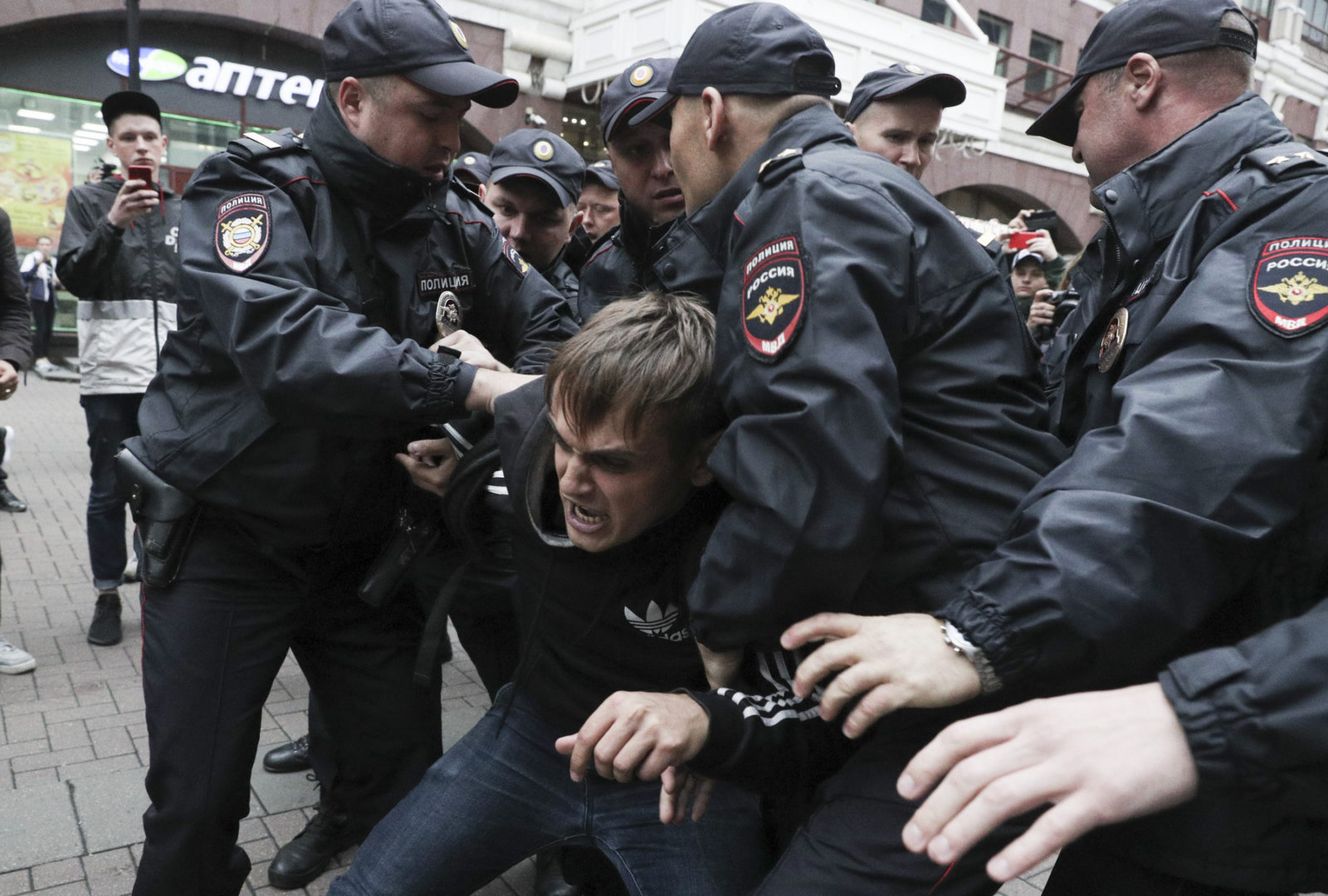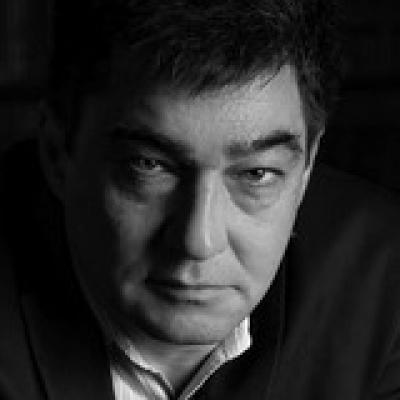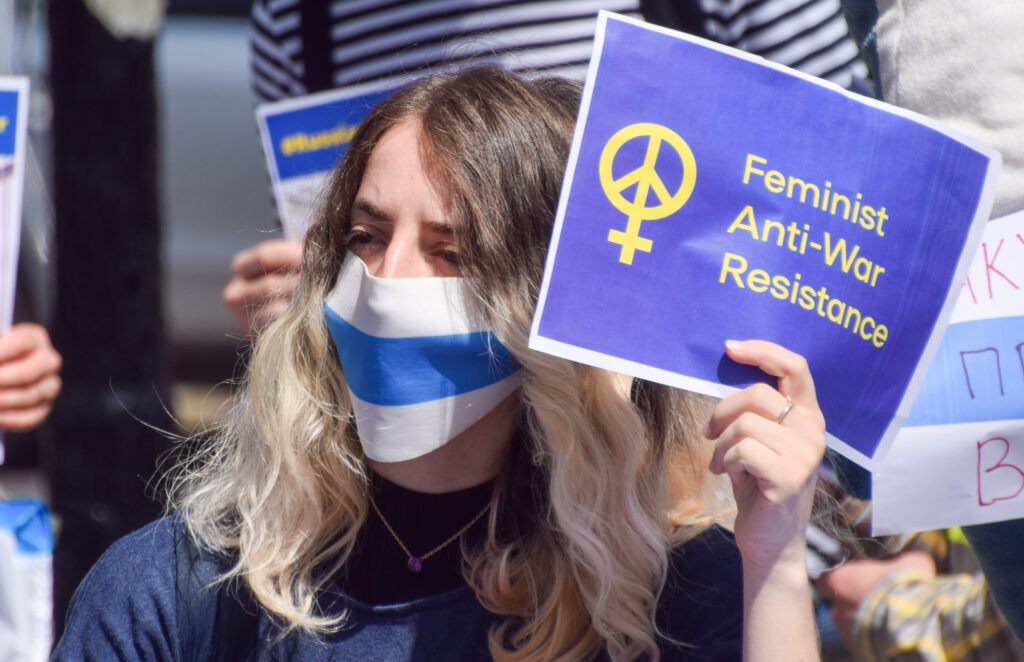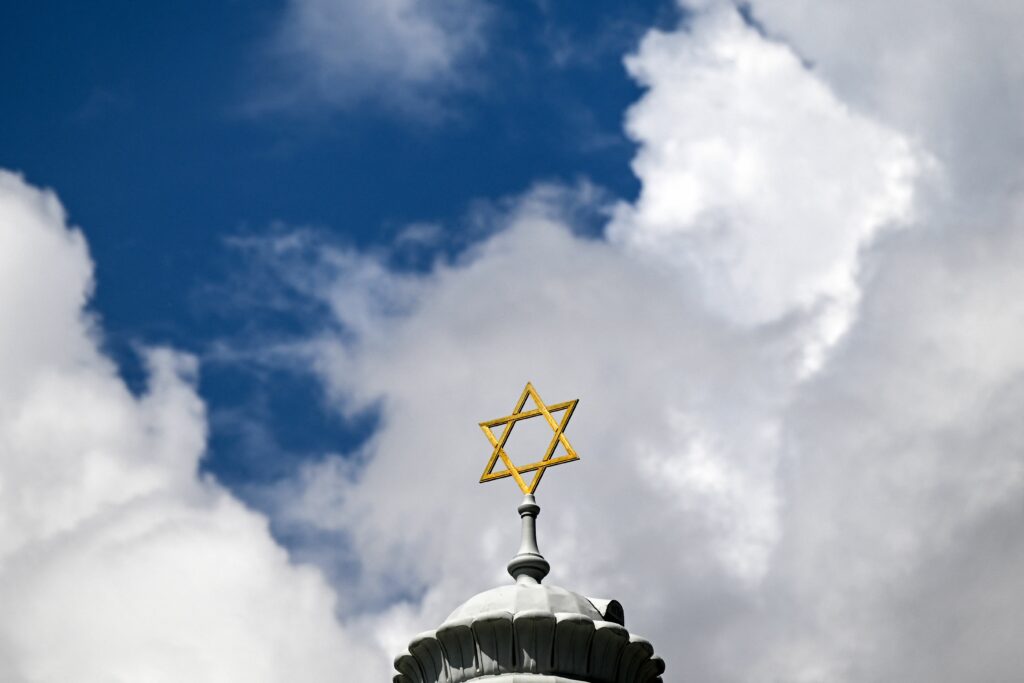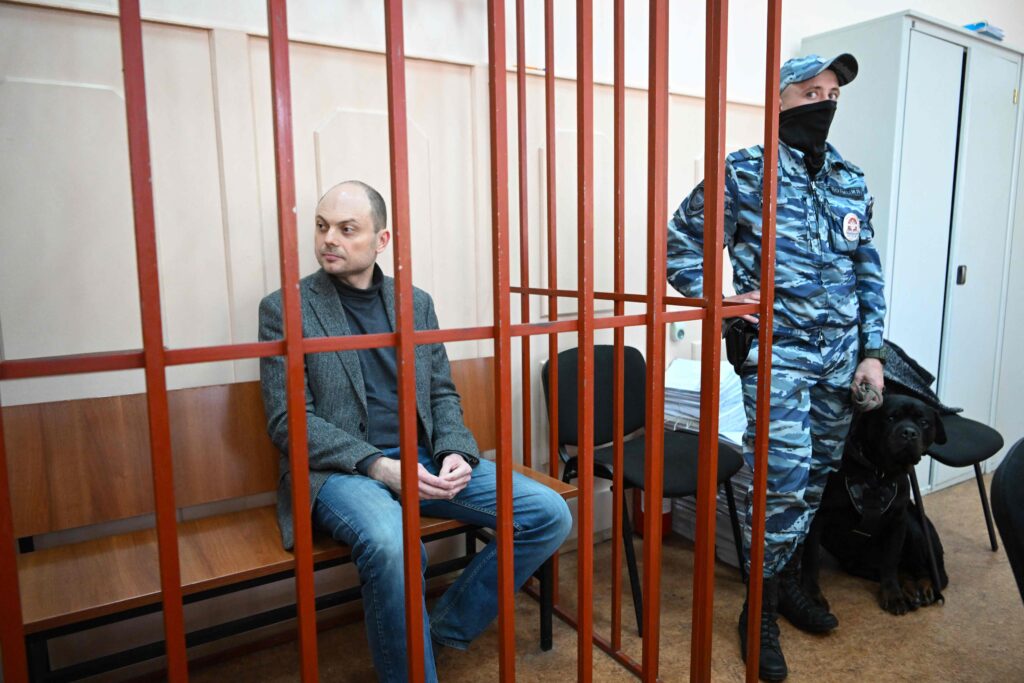The Russian capital is still embroiled in protests, spawned by the clearly baseless and unjust refusal to permit practically all candidates from Russia’s democratic, non-systemic opposition to run in elections to the Moscow City Duma. A series of particularly large protests took place in July and August; some had received advance permission from the authorities, others had not. Tens of thousands of people took part in these demonstrations, which grew to become the largest in Russia since the protests of 2011-2012. Predictably, the Russian authorities have responded with a wave of repression.
But while the state’s repressive machinery is well-oiled and easy to predict, the reaction to the Moscow protests also included some innovations. Probably the most striking of these was the sheer breadth of instruments used against protesters, ranging from criminal lawsuits to abuse of criminal proceedings, administrative, and even civil law. And let’s not forget the simple use of police violence.
Tried and tested repressive measures
Article 318 of Russia’s criminal code concerns the use of force against representatives of the state, including incidents which did not present any danger to the latter’s health (but even in these cases the article provides for a prison sentence of up to five years.) This article is routinely used against participants of peaceful protests. The article has been used in criminal cases against Moscow protesters for many years: it surfaced after the protests on Bolotnaya Square on May 6, 2012, in the course of the popular assemblies against the sentencing of Alexey Navalny on July 18, 2013, the anti-corruption protests of March 26 and June 12, 2017 (held under the slogan “He’s not ‘Dimon’ to You”), the so-called “Maltsev Revolution” of November 5, 2017, and the “voters’ strikes” of January 28, 2018.
This time, the authorities spared no time in bringing Article 318 to bear against participants in the large protests of July 27. At the time of writing, eight people face criminal charges on this basis, three of which have already been handed prison sentences of between two to three and a half years. The rest are currently in pre-trial detention. Pavel Ustinov, detained during a protest on August 3, has already been sentenced on the same charge, although it seems that he was simply a passerby.
Given their context and content, it is obvious that the charges of violating Article 318 launched on July 27 and August 3 are fundamentally unjust and baseless. In fact, there were no striking episodes of violence against police during these peaceful protests, despite the highly provocative acts taken by members of law enforcement agencies at the time. Allegations of violence range from Kirill Zhuvkov touching a policeman’s helmet to Aidar Gabidullin and Samariddin Radzhabov throwing plastic bottles. Pavel Ustinov, for his part, managed to evade a pursuing member of the Russian National Guard, whose shoulder was dislocated during the chase. Yet in all these cases, we are expected to believe that none of the charges brought under Article 318 can be compared to the searing pain experienced by “attacked” police officers.
The use of Article 212 against protesters is somewhat rarer, but has been observed on repeated occasions. This article of Russia’s criminal code, concerning participation in mass riots, allows for a prison sentence of up to eight years. For example, these charges were brought against participants of peaceful demonstrations on May 26, 2012, despite the authorities granting prior permission for the protest. It has also been used against protesters in Ingushetia who demonstrated in March 2019 against changes to the republic’s border with Chechnya. Similarly, this article was invoked alongside charges of using violence against police in criminal cases against participants of the July 27 protest rally in Moscow. A team of more than 80 investigators was assembled to assess these simultaneous charges.
This law defines mass riots as events accompanied by violence, havoc, arson, destruction of property, the use of weapons, explosive devices, explosives, poisonous substances and other substances which pose a threat to others, and attempts to mount armed resistance to representatives of the authorities.” Nothing resembling this took place in Moscow; although 12 people were initially accused of taking part in the riots, nobody accused them of committing acts of violence. However, the authorities were subsequently forced to step back: while three people were convicted under charges of Article 318, additional charges were eventually not brought under Article 212. Furthermore, the prosecution of five people was discontinued, four people were fully released, and two were transferred from jail to house arrest. As for the events of mid-September, only four people were accused of participation in mass riots. Two of whom, including Alexey Minaylo, were completely absent from the demonstrations and were only charged with this one crime.
But there were further charges brought against protesters. For example, Yegor Zhukov, a student at Moscow’s Higher School of Economics and a popular opposition blogger was initially accused of taking part in mass riots. Yet the charges against him were replaced by new charges on the basis of Article 280, which prohibits public calls for extremist acts. This article of Russia’s criminal code is regularly deployed against critics of the regime, and prescribes sentences of up to two years in prison. This new charge against Zhukov was based on clearly biased expert testimony.
On September 5 another activist, Konstantin Kotov, was sentenced to four years’ imprisonment under the now notorious Article 212.1 of Russia’s criminal code, which punishes “repeated violation of the established procedure for organising or holding a protest, rally, demonstration, procession, or picket.” Kotov thus became the seventh person in Russian history sentenced under this unconstitutional article and the first to be convicted by it since the verdict against Ildar Dadin was dropped in February 2017. Article 212.1 can be invoked if the defendant is found to violate the “established procedure” on such public events four times over the course of six months. Kotov was charged with five such “offences,” the last two of which occurred during the wave of protests around elections to the Moscow City Council: they concerned a Facebook call to go out to protest on Trubnaya Square on July 19 and another call to join a non-violent march on August 10, which was held after an agreed protest rally but did not itself have prior permission from the authorities.
Finally, on September 5 the blogger Vladislav Sinitsa was sentenced to five years’ imprisonment for tweet which suggested that somebody may one day get revenge on law enforcement employees who broke up peaceful protests by using violence against the police officers’ children. Sinitsa was found guilty of inciting hatred with threats of violence (Article 282 of the criminal code.)
It is worth remarking upon the extraordinary speed of the investigations and trials in the aforementioned cases. Regardless of their complexity, the preliminary investigation of criminal cases generally takes at least several months in Russia (this is also true for politically motivated cases.) But cases concerning the Moscow protests turned out to be a surprising exception to this general rule: in the six criminal cases which ended in convictions, the investigation took less than a month. In Kotov’s case, it took less than three days.
A growing legal arsenal
The use of the aforementioned articles of the Criminal Code has become quite predictable in the state’s attempts to suppress the opposition. However, this time the authorities have attempted to expand their legal arsenal.
Thus on July 24, a criminal case was launched under Article 141 (on impeding the activities of the electoral commission), due to the fact that a protest in support of independent opposition candidates was held outside the Moscow City Electoral Commission on July 14. Police conducted searches of the candidates’ campaign headquarters and homes, as well as those of their relatives and a number of activists. Furthermore, several people were questioned by state investigators. Nevertheless, the case has not developed further and no defendants or suspects have yet been identified.
On August 3, the investigative committee announced that it had opened a criminal case under Article 174 (on the laundering of money or other property acquired by criminal means) in connection with the financing of Alexey Navalny’s Anti-Corruption Foundation. On September 12, more than 200 searches in over 40 cities were conducted in connection with this case. Police and investigators turned up at the foundation’s headquarters in various regions, at the homes of its current and former employees, and at the front doors of relatives and activists with no connection to the organisation whatsoever. They seized digital devices and money and froze the bank accounts of legal entities associated with Navalny as well as the personal accounts of dozens of people.
Moreover, on August 22 a criminal case was opened against Ivan Zhdanov, director of the Anti-Corruption Foundation and a Moscow City Duma candidate who was refused registration by the city’s electoral commission. Zhdanov was charged with “maliciously failing to comply with a court order” (Article 315) which mandated him to remove the foundation’s film “He’s Not ‘Dimon’ to You” from the internet. The popular investigative documentary film accused Prime Minister Dmitry Medvedev of corruption (“Dimon” is a colloquial form of the Russian name Dmitry — ed.) Obviously, the request was technically impossible to perform given that the film has long since spread to other media resources not related to or not managed by the Anti-Corruption Foundation. In this way, the criminal case against Zhdanov became just one instrument in an entire campaign of repression unleashed against the protests.
It should now be clear that the Russian authorities have resorted to an extremely wide selection of articles from the country’s criminal code in their crackdown on protesters. But what does that say about the trends, strategies, and tactics of Russian law enforcement?
The fact that several of these criminal cases did not include any defendants is no accident or oversight on the authorities’ part. Such criminal cases give the authorities a pretext to impose procedural measures common to criminal cases on a wide-ranging and arbitrary basis. Homes and work premises are searched, sometimes simultaneously and sometimes repeatedly. Digital devices, documents, and other possessions are seized. People are interrogated and their bank accounts frozen. All these acts thereby become independent tools of repression and intimidation, while the sheer variety of criminal charges invoked suggest that the authorities intend to spread the threat of criminal liability to as many different groups of protesters, in as many different circumstances, as they possibly can.
Beyond the law
Of course, criminal charges are just one of several instruments of repression available to the Russian authorities. They also resort to brutal police violence (dozens of people have been beaten on Moscow’s streets, with several protesters suffering broken limbs and other serious injuries), mass arbitrary detentions (more than 1,300 people were detained on July 27 alone, the highest number since such statistics were collected), administrative arrests, and fines. Younger protesters have also been threatened with conscription into the military or expulsion from university.
In the course of recent protests, the authorities have also experimented with new forms of repression beyond their already creative use of criminal prosecutions. For example, candidates who were refused registration to run in the local elections, as well as people whom the authorities consider to be the leaders of the protests, have faced consecutive and continuous administrative charges. After having served a brief sentence for an administrative offence, a new charge is brought against them immediately after their release. High profile figures in Navalny’s Anti-Corruption Foundation can attest to this; Ilya Yashin spent 41 days behind bars as a result. Lyubov Sobol, as the mother of a young child, is exempt from arrest; instead, she has been handed a series of administrative fines which now amount to over one million rubles.
Even more disturbingly, the authorities have targeted protesters who brought their children along to demonstrations by attempting to remove their parental rights. There have been two such cases, both of which ended in a refusal by the court to comply with the investigators’ demands. Nevertheless, a precedent has been set.
Another new phenomenon are the claims filed by state-owned and state-dependent companies for damages allegedly incurred by mass protests. Moscow Metro, Mosgortrans (which operates tram and bus services throughout the capital), and Avtodor (the Russian state highways service) are just some of the organisations which have taken this step. They are demanding millions of rubles from Navalny, Sobol, Yashin, and others the authorities deem to have been the organisers of prohibited mass protests, on the grounds that the events required the work of additional employees over the weekend, new equipment as demanded by the local authorities, and caused damage to public transport and green spaces. Little evidence has yet been provided to support these accusations. Nevertheless, despite the threadbare legality of these claims, the first of them (by Mosgortrans) has already been ruled valid and supported by the courts.
A few lessons
Considering all that we now know about the Russian authorities’ repressive response to the recent rise in protest activity, the following conclusions can be drawn:
- The authorities are treating mass protests as a serious threat. It is hard to interpret their large scale reactions and sheer diversity of repressive methods any other way.
- The authorities’ actions appear random, inconsistent, and feverish. It seems as though they deploy tools of repression without much thought in advance as to their effectiveness. This can probably be explained by the inconsistency between the acts of different “centres of power” and the organic defects in the bureaucratised power vertical through which Russia is governed, which has destroyed natural channels for feedback and accountability. In such a structure, the goal of each component is not to act efficiently, but to demonstrate activity.
- The clear legal ineffectiveness of many tools used for repression once again suggests that the authorities are tending towards the use of increasingly primitive punitive practices, leading to an overall degradation of the system of power.
- Repressions, particularly those launched on the basis of criminal charges, remain selective and are primarily intended to intimidate society.
- Nevertheless, the authorities are still hesitant to go too far in their repression. Their primary goal is to strike a balance between the level of repression required to effectively intimidate society into submission and the level of repression which produces the opposite effect: provoking mass outrage at the apparent injustice of such persecution, leading to mass dissent. This explains the authorities’ search for new, “non-criminal” means to suppress protesters.
- This same dilemma can be observed in the remarkable speed by which the investigative committee and criminal courts process politicised prosecutions. On the one hand, such flagrant disregard for even the illusion of due process is designed to warn society that there are very real dangers to participating in protests. On the other hand, this rapid acceleration reduces the period of uncertainty about detainees’ ultimate fate, making urgent mass protests to influence the court’s ruling even more rational. This, in turn, reduces the likelihood that repression will trigger new protests.
